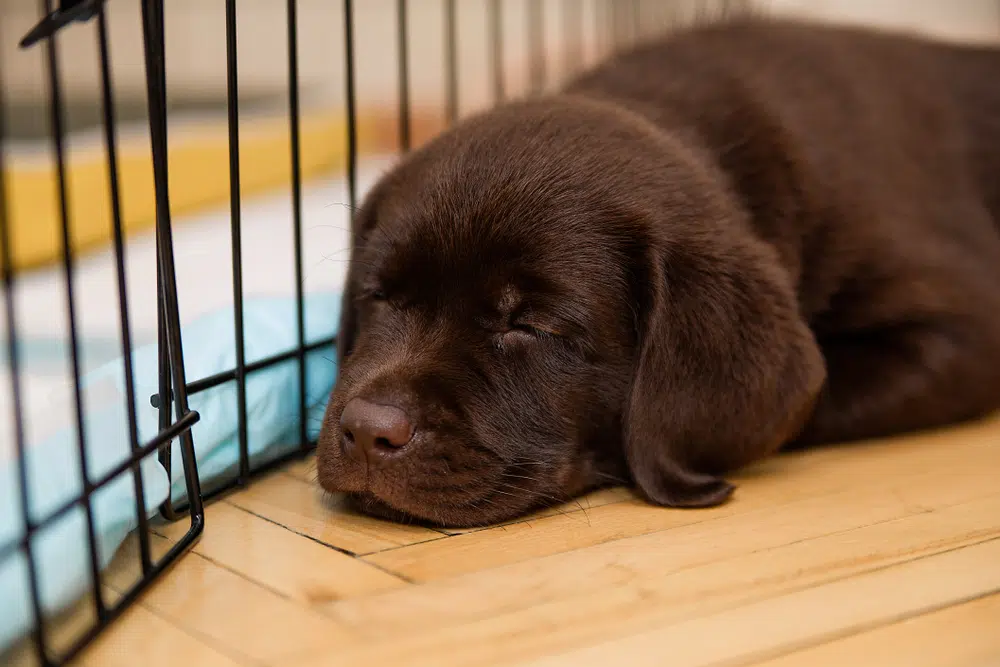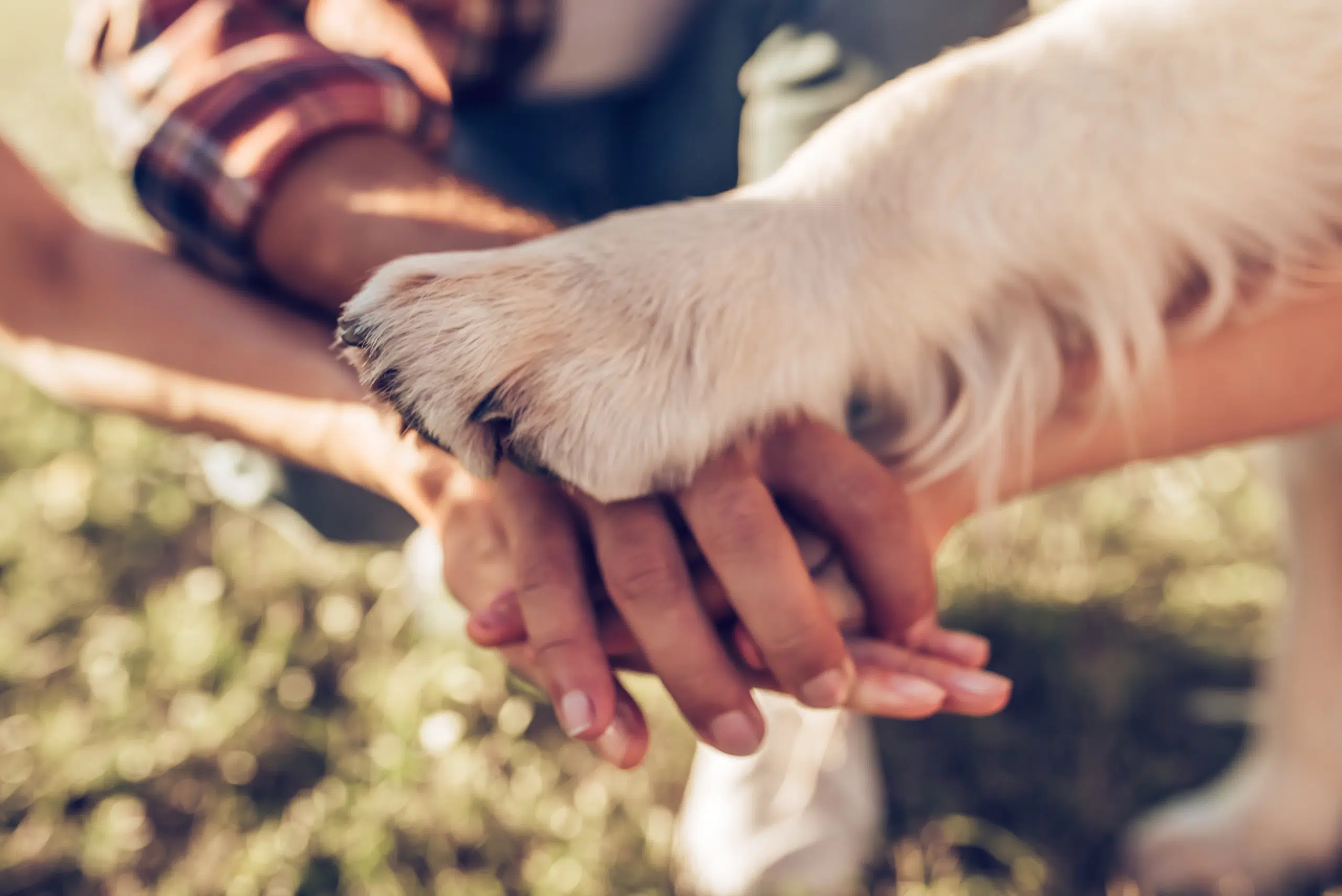While it might seem counterintuitive, a dog crate can indeed be too big for your furry friend. While providing ample space may seem generous, an excessively large crate can undermine the purpose of crate training, leading to potential behavioral issues and discomfort for your dog. Understanding the ideal size for your dog’s crate is essential for ensuring their safety, comfort, and successful training.
Understanding the Crate Conundrum
In today’s market, there’s a vast variety of crate sizes available, leading to a common dilemma faced by many dog owners. The question often arises: “What’s the ideal crate size for my dog?” This conundrum isn’t just about aesthetics or space management; it’s deeply rooted in the dog’s comfort, safety, and overall well-being. In short, yes a crate can be too big. Read below to learn more on why and how to get the right size crate.
Why Crate Size Matters
The significance of crate size goes beyond just providing a space for your dog to rest. An appropriately sized crate plays a crucial role in a dog’s emotional and physical health. Incorrectly sized crates can lead to potential risks, such as increased anxiety or even physical harm.
According to Perfect Fit: Choosing the Right Crate Size for Your Dog, a correctly sized crate is essential for ensuring that your dog feels secure and comfortable. Behavior specialists emphasize that a correct size crate should be a sanctuary for your pet, not a source of stress.
Setting the Stage for the Discussion
As we delve deeper into the topic, we’ll uncover the main points that every dog owner should consider when choosing a crate. Making an informed decision is paramount for the well-being of our furry friends. It’s not just about the crate’s size, but also its design, material, and how much room and placement within the home.
Common Misconceptions
There are several myths surrounding dog crate sizes. One prevalent misconception is that “bigger is always better.” However, an oversized crate can be just as problematic as a cramped one. Debunking these myths is essential to ensure that our pets have a safe and comfortable space.
The Importance of Crate Size
Safety Concerns
Travel Safety
When it comes to travel safety, the importance of a well-fitted crate cannot be overstated. In some states, legal requirements require the restraining of dogs during car travel, emphasizing the role of crates in ensuring our pets’ safety during transit.
According to a guide on “What size dog crate do I need for my dog?”, the right dog crate size is not just about comfort but also about ensuring that our furry friends are safe during journeys. An appropriately sized crate minimizes the risk of injury during sudden stops or accidents.
Preventing Unwanted Behaviors
Crates play a pivotal role in behavior management. They act as a deterrent, preventing dogs from indulging in unwanted behaviors like chewing on household items. The Humane Society underscores the significance of crate training in shaping a dog’s behavior. A well-trained dog is less likely to exhibit destructive behaviors when left alone.
Emotional Well-being
Comfort and Security
For many dogs, their crate is more than just a confined space; it’s their sanctuary. A well-fitting crate provides them with a sense of security, crucial for their emotional health. However, this sense of security can be compromised if the crate is too big or too small. Ensuring that the crate is of the right size is paramount for a dog’s psychological well-being.
Toys and Crate Environment
Toys play a significant role in a dog’s life, more so when they are in their crate. They can alleviate boredom and provide comfort. However, it’s essential to choose safe toys that fit well within the crate. Toys contribute positively to a dog’s well-being, especially when they are in their crate.
Training Implications
Potty Training and Crate Size
One of the primary uses of a dog crate, especially for puppies, is to aid in the potty training process. The size of the crate plays a pivotal role in this training phase, and understanding the correlation can make the process smoother for both the dog and the owner.
Natural Instincts
Dogs have a natural instinct not to soil their sleeping area. A crate that’s appropriately sized for most dogs — not too big or too small — encourages this instinct. In a well-fitted crate, a dog will feel the space is their den, making them less likely to have an accident.
The Problem with Oversized Crates
If a crate is too spacious, a puppy might designate one corner for sleeping and another for relieving themselves. This behavior defeats the purpose of crate training for potty habits. An oversized crate can inadvertently teach a puppy that it’s okay to soil their living space, leading to challenges in housebreaking them.
Signs and Scheduling
With the right crate size aiding in potty training, it’s also crucial for owners to recognize the signs that their puppy needs to go. Regularly scheduled breaks, especially after meals, playtime, or naps, can set a routine. Over time, with consistency, the puppy will learn to hold it while in the crate and relieve themselves during the scheduled breaks.
Cleanliness
Accidents will happen, especially in the early stages of potty training. It’s essential to ensure the crate remains clean and comfortable. Any accidents should be cleaned immediately to prevent the puppy from getting used to the smell and feeling of a soiled crate.
By understanding the intricacies of potty training in relation to crate size, dog owners can set their pets up for success, ensuring a harmonious living environment for everyone involved.
Learn everything you need to know about training with our Dog Training 101 Article.
Identifying the Right Crate Size
General Guidelines
Identifying the Right Crate Size
Selecting the right crate size is paramount for your dog’s comfort, safety, and overall well-being. A crate that’s too small can be restrictive and uncomfortable, while one that’s too large can make your dog feel insecure. Here’s a detailed guide to help you make the right choice:
Measuring Your Dog
- Length: Start by measuring your dog from the tip of their nose to the base of their tail. This will give you an idea of the crate’s length. However, it’s advisable to add a few inches to this measurement to ensure they have enough room to stretch out.
- Height: Measure your dog from the ground to the highest point of their head when they’re sitting. Dogs should be able to sit and stand without their head touching the top of the crate.
- Width: While less commonly considered, the width is also essential. Your dog should have enough room to turn around comfortably. Measure the widest point, usually across the chest or hips.
Factor in Growth for Puppies
If you’re buying a crate for a puppy, consider their adult size, especially if they belong to larger breeds. Many crates come with dividers, allowing you more space to adjust the space as your puppy grows.
Weight Considerations
Some crates also have weight recommendations. Ensure the crate you choose can support your dog’s weight, especially if you’re considering a collapsible or fabric crate.
Considering Growth and Changes
For those with puppies, it’s essential to factor in their potential growth. Puppies can grow rapidly, and what might be a perfect fit now could become too small in a matter of months. Similarly, adult dogs might undergo weight changes, necessitating adjustments in crate size. Always be prepared to adjust the crate size to cater to your adult dog‘s evolving needs.
Safety Risks
Safety is paramount, especially during travel. In an oversized crate, a dog might move around too much, posing risks during sudden stops or turns. Ensuring that the crate is snug, but comfortable, can minimize these risks.
Adjusting Crate Size as Dogs Grow
Adjusting for Growth
While puppies grow rapidly, it’s essential to adjust the crate size accordingly. Some owners opt for dividers in larger crates, ensuring the space is just right for their puppy and can be adjusted as the puppy grows. This approach prevents the need to buy multiple crates and maintains the principle of not giving too much space during the potty training phase.
Transitioning Crates
As puppies grow, their crate requirements change. Recognizing the signs that it’s time to upgrade to a larger crate is crucial. For instance, if your dog can’t stretch out or stand comfortably, it might be time for a change. Regularly assessing your dog’s comfort and space in the crate ensures their well-being.
Duration Concerns: How Long Can a Dog Stay in a Crate?
How long is it safe to leave a dog in a crate?
The duration a dog can safely spend in a crate varies based on factors like age, health, and individual needs. Generally, puppies require more frequent breaks, while adult dogs can stay longer. However, prolonged confinement can lead to anxiety and health issues. Here’s a detailed breakdown:
Age Matters
- Puppies: Young puppies have limited bladder control. Typically, the number of hours a puppy can hold its bladder corresponds to its age in months. For instance, a two-month-old puppy might need a potty break every two hours. Therefore, leaving a puppy in a crate for extended periods is not advisable.
- Adult Dogs: Mature dogs have better bladder and bowel control. Most adult dogs can stay in a crate for up to 8 hours. However, it’s essential to ensure they get adequate exercise before and after crating.
- Senior Dogs: Older dogs might need more frequent bathroom breaks, even if they’re well crate-trained. Their comfort and health should be a priority.
Activity Levels
Dogs that are more active or have high energy levels might find it challenging to stay confined for extended periods. Ensure they get ample exercise and mental stimulation before being crated. Find your dog breed’s energy level at the Furlyfe Breed Page.
Health Considerations
Dogs with certain health conditions, such as urinary tract infections or digestive issues, might need more frequent bathroom breaks. Always consider your dog’s health status when determining crate duration.
Behavioral Aspects
Extended confinement can lead to feelings of isolation or anxiety in some dogs. If your dog shows signs of distress, like excessive barking, whining, or destructive behavior, you might need to reconsider the duration you crate train or even the idea of crating.
Environmental Factors
Ensure the crate is placed in a comfortable environment. Avoid areas with extreme temperatures or direct sunlight. If the environment is uncomfortable, the duration in the crate should be minimized.
Breaks are Essential
Regardless of age or health, all dogs need regular breaks from the crate. These breaks are not just for bathroom needs but also for stretching, playing, and interacting with family members.
Frequently Asked Questions
Crate Training Basics
What is crate training and why is it important?
Crate training is a method used by dog owners to provide their pets with a safe and familiar space within their homes. It involves teaching dogs to associate the crate with positive experiences, making it a comfortable and secure environment for them.
According to the American Kennel Club, crate training offers numerous benefits, including aiding in potty training, reducing destructive behavior, and providing dogs with a sanctuary. Understanding the essence of crate training is crucial for every dog owner.
Crate Comfort
How can I make my dog’s crate more comfortable?
Ensuring your dog’s comfort in the crate is paramount. This can be achieved by adding soft bedding, safe toys, and positioning the crate in a quiet spot away from direct sunlight or drafts. Familiar scents and items can also make the crate feel more like home.
Choosing the Right Crate
What factors should I consider when buying a crate?
When purchasing a crate, consider your dog’s size, potential growth, and behavior. The crate’s material, design, and ventilation are also vital. For instance, wire crates offer better ventilation, while plastic ones might be more suitable for travel.
Before making a decision, it’s beneficial to address essential questions listed in the guide 10 Questions To Answer Before Buying A Dog Crate. Choosing the right crate ensures safety, comfort, and a positive crate experience for your dog.
Conclusion
Choosing the right crate for your dog is more than just a matter of size; it’s about ensuring their safety, comfort, and overall well-being. From understanding the myriad of crate sizes available to recognizing the significance of the right dog crate size and dimensions in travel safety and behavior management, it’s evident that a well-fitted crate plays a pivotal role in a dog’s life.
The emotional well-being of our furry friends is intrinsically linked to their environment. A crate that’s too big or too small can lead to anxiety, behavioral issues, and even physical harm. By adhering to general guidelines, considering growth, and being aware of potential issues with oversized dog crates, dog owners can make informed decisions that prioritize their pet’s health and happiness.












Get involved!
Comments